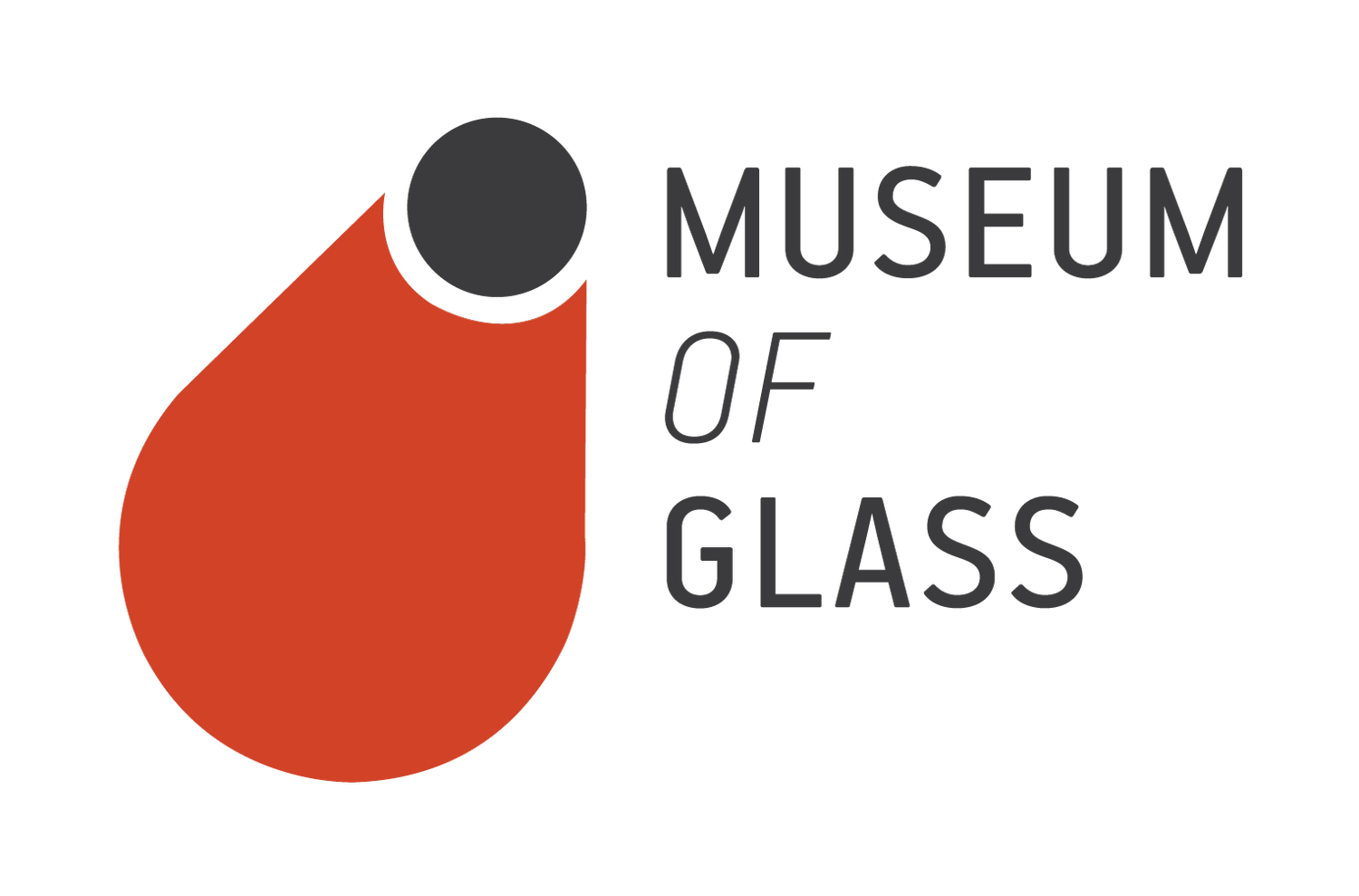"Out of the Vault: Soundtracks" with RYAN! Feddersen
Photo courtesy of the artist.
Making art from glass is time-consuming. It is an undertaking that can unfold over hours, but more often takes place over days, weeks, or even months. A great music playlist can be essential to keeping focused and staying creative. These playlists were the starting point for our exhibition Out of the Vault: Soundtracks. MOG curator Katie Buckingham sat down with RYAN! Feddersen to learn more about her work in the exhibition and creative process.
RYAN! Feddersen (Confederated Tribes of Colville, born 1984). Disconnected Bison Stack, Made at the Museum in 2019. Blown glass; 14 3/16 × 10 3/4 in. (36.1 × 27.3 cm). Collection of Museum of Glass, gift of the artist. Photo courtesy of the artist.
KB: Let’s start by talking about Disconnected Bison Stack. It was made at the Museum as part of your 2019 Visiting Artist residency.
RF: During the residency, I was making a series of works inspired by Columbia Plateau burden baskets. These baskets are traditionally used for food gathering, but I have been thinking about the metaphorical burdens we carry. Disconnected Bison Stack talks about two different burdens – the first references the mass slaughter of the bison, an extremely destructive part of colonialism that continues to have ramifications today. The second set of icons relates to a previous project called Disconnected Towers. That project was inspired by the gentrification I witnessed in my neighborhood in West Seattle, where single family houses were torn down to build much more expensive, inaccessible units. Disconnected Bison Stack combines icons and symbols from both projects onto a burden basket.
KB: I’d love to hear more about the music that you put on your playlist. Do you listen to it while you work?
RF: I listen to a lot of different things while I work, and I wanted to share some artists that I look up to. Buffy Sainte-Marie and John Trudell are icons of contemporary Native music. Black Belt Eagle Scout and Ya Tseen are from a younger generation. I selected songs that I think are beautiful, musical pieces, but also have important social commentary. The playlist mirrors the importance of social messaging in my own work. I also really wanted to include local artists. I like listening to music, and a lot of my friends are in bands, so it was important to me to represent some local scene as well.
KB: Another aspect of being creative is where you work. I’d love to hear about your studio space.
RF: I like where I work because it feels like a time warp. My studio has low windows and, because the lighting is always the same, I have no idea how long I’ve been working on something. It is really nice to just be consumed by my process and lose track of time without distractions. I also like the ability to work in different places. I might work in my studio, but I often draw in a chair by the window (if my cats let me) or at my kitchen table. Sometimes I like to work in bars, too. Having different spaces can shift your point of view.
KB: That’s really cool. When you’re working on a new series, where do you go for inspiration?
RF: I try to bring in a lot of different references. It is like a funnel – you need to fill yourself up with a lot of ideas, and then what comes out the other side, the processing that happens, is the work that you do as an artist. My work often starts with Plateau storytelling and aesthetics, and combines with contemporary ideas. It is very important to think about the messaging within a piece, and include metaphor, symbolism, and action to reinforce its content.
KB: Do you do anything to help push through a creative block?
RF: Sometimes an idea strikes like a lightning bolt. Other times it takes a process. I noticed myself doing the same things over and over again in my sketchbook, so I made myself a brainstorming template. It has a series of lists that help me think through different lenses. For example, there is a list for content – what am I trying to communicate? And another section for thinking about material opportunities – am I working in glass? Vinyl? Acrylic? And a third list for thinking about how to integrate action and inter-activity. Then I take ideas from each list and start connecting them together.
KB: What are you working on now?
RF: Recently, I’ve been working on Coyote Now projects, which are contemporary adaptations of Coyote’s role as the trickster. I had a residency at Institute of American Indian Arts where I started working on an idea called Coyote and the Monsters Yet to Slay. One of Coyote’s jobs, when two-legged people were going to come and inhabit the world, was to slay monsters that were going to be a threat. I have been thinking about how we have all these societal monsters that still need slaying, like the economy, and about ways that Coyote could symbolically do that work for us.
Check out RYAN! Feddersen’s playlist on Spotify, and visit us at Museum of Glass to see more of our collection featured in Out of the Vault: Soundtracks.
About The Artist:
RYAN! Feddersen specializes in creating compelling site-specific installations and public artworks which invite people to consider their relationships to the environment, technology, society, and culture. She is a member of the Confederated Tribes of the Colville Reservation from the Okanogan and Arrow Lakes bands. Her interactive murals, site-specific installations, and immersive public artworks activate spaces throughout the Pacific Northwest.
Feddersen’s work is featured in Out of the Vault: Soundtracks, currently on display at Museum of Glass and open through June 18, 2023.
Learn more and view Feddersen’s work at: http://ryanfeddersen.com/


